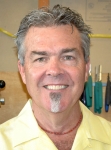2013 Instructor Interview - Jeff Fulkerson
Discover Jewelry with Jeff Fulkerson
Jeff Fulkerson's a soft-spoken jewelry teacher with years of experience and wisdom gained from studio practice. His silver jewelry techniques are carefully developed from practice and study, both self-educated and mentored by Native American artists.
Listen in on Jeff's interview with Heather today and discover his jewelry-making process, what he loves about teaching, and some of the stories he has to share. As always, there's a transcript below, too!
(audio not playing? click here)
Explore Jeff's Classes this February in Tucson:
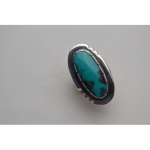 Basic Bezel Ring Bling Feb. 2, full-day  |
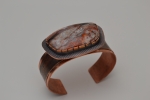 Bezel Cuff Feb 3, full-day  |
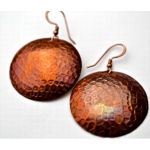 Textured Copper Earrings Feb 4, morning  |
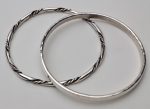 Bangles Feb 4, afternoon  |
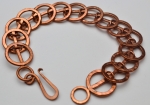 Slinky Links Bracelet Feb. 5, full-day  |
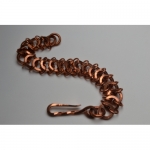 Copper Millipede Link Bracelet Feb 7, morning  |
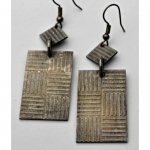 Texture Sterling Silver Earrings Feb 7, afternoon  |
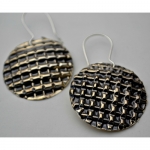 Micro Fold Sterling Silver Earrings Feb 8, morning  |
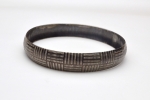 Roller Print Bangles Feb 8, afternoon  |
Transcript of our interview with Jeff Fulkerson
Heather: We are on the phone with Jeff Fulkerson, how are you Jeff?
Jeff: I'm great, how are you?
Heather: I'm doing good thanks. What medium do you primarily work in?
Jeff: Mostly silver. Sterling silver.
Heather: How did you find it - was it the first thing you tried, or was there a process of discovery and experimenting with other mediums first?
Jeff: Well, I kind of evolved. As a kid I started making models, and then I made leather stuff. I always loved Native American jewelry. I got a book, read it, and then I started making silver jewelry. I guess it was kind of a natural evolution.
Heather: What tools do you use most often, and what tools make your work possible?
Jeff: A torch, a jeweler's saw; if you can master, those you can create an awful lot of jewelry. There's obviously a ton more tools but if you can master those, you can go crazy.
Heather: Have you ever improvised a tool or repurposed a tool?
Jeff: I'm sure I have, because you kind of use whatever is there. I know one time I wanted to bend some copper tubing, big copper tubing, and I used a piece of plastic pipe as my mandrel, so I guess yes, I have.
Heather: Cool! What is your favorite way to finish a piece, or your favorite effect?
Jeff: That's kind of hard, because with the price of silver and gold nowadays, everybody is using a lot more copper. And with copper, I love to get patinas on it, burnished and brass brush effects, but with silver, I still am partial to a high polish and just getting it on the polishing machine, really shining it up.
Heather: What advice would you give to a beginner who's maybe intimidated by how intricate the process seems?
Jeff: I think the best thing to do is take a class, because then you have someone who knows what they're doing, telling you how to do what you want to learn. If you take a class, then you cut out all the mistakes that people like myself who were self-taught, have made. Haha!
Heather: And maybe specifically take a class from you right? Haha!
Jeff: Specifically, yes!
Heather: Once you make a piece and you're happy with it, where does it go?
Jeff: Well, that depends. A lot of stuff you make because someone asks or commissions you, and says I want this, and obviously, that goes to them.
A lot of pieces just go on the website; whatever gets past my wife. Haha! Typically on the website or to the customer who ordered it.
Heather: What gives you inspiration to try new things or keep you motivated?
Jeff: Oh my goodness, anything! Everything! I love making jewelry. It's the creative process and it's just a hoot. There are so many different things. You see a design; we were looking at an old window screen the other day that was real dilapidated. The lines and the way it flowed, instead of being a nice square geometric pattern, it was all distorted. I was like, "Oh man! That would be beautiful on a piece of metal, if I'd texture that!" I mean inspiration is everywhere.
Heather: Everywhere, cool. Have you ever rescued a piece that seemed like it was broken and how did you do it?
Jeff: I don't know. That's an interesting question. I mean, I've repaired pieces.
There is an interesting line you have to cross in the creative process and that line is learning that sometimes it's messed up and it's best to throw it in the scrap pile and start again. It took me years to learn, that because you're like, "Oh, it's gold, it's silver, and I can't waste it!" But it doesn't get wasted because it becomes scrap metal, and you melt it down, and send it in, and start all over again.
There's a fine line between working on something to save it, as opposed to looking at something and saying, it's not worth the energy to try and save this or resurrect it, let's learn from what didn't work and start again.
Heather: You've studied with many Native American artists, how has that influenced your jewelry designs and techniques?
Jeff: I love Native American stuff, I love it! Our family came from Cody, Wyoming and my great grandmother knew Buffalo Bill, and they have a lot of artifacts and stuff. I grew up around it, I've always been around it and I love it.
Especially the really old stuff, because to see what these guys did in primitive conditions and how in the world they made jewelry with an old blow torch, it's just staggering to look at what they were able to achieve with really not very much equipment and mostly handmade tools. That to me is incredibly inspiring, it blows my mind.
With some of the new stuff, like with Jesse Monogya: the inlay, his inlay is out of this universe, the designs and stuff that he's created. The innovation of stuff, like Richard Tsosie. He developed - well, he resurrected an old technique and made it new, and kind of made it his own. That's what really put him on the map in the early '70s.
All the way around it's just very interesting to me how the Native American stuff has evolved.
Heather: Absolutely. Can you tell me a little bit about your creative process? Do you begin with a finished piece in mind or do you play around a bit until you find something that works and just go from there?
Jeff: It's kind of all of the above. Usually what happens, is I'll just be sitting around minding my own business, and all of the sudden like a bolt out of the blue I'll get an idea: "Oooh, I wonder what that would look like." And then sometimes I'll sit down and sketch out the finished piece, and other times it just kind of evolves as you make it.
To give you an example, 6-8 years ago we had gone to the shows in Tucson and I had a lot of really cool fossilized dinosaur bone rough. My wife kept saying "You gotta make something out of this!" And I didn't know what to make so I kept going back and forth trying to figure out what to do and around and around. Then it hit me, like the bracelet made itself.
Then there's other bracelets where I've sat down and drew everything out, spaced everything, measured so it just really depends on the piece. You can't really nail it down.
Heather: Little bit of both then, huh?
Jeff: Yeah.
Heather: What techniques have you found that people want to learn from you the most?
Jeff: I think most beginners are afraid of a torch, and maybe they've been stringing beads or doing some wire-wrapping or riveting and things. They know that if they could just get over that torch thing, they could really make some cool stuff.
So I think most people want to learn how to solder and how to use the torch and get over the fear of the torch. That, to me, is tremendous, because once you take that step, it really opens up your jewelry-making ability, and the sky is the limit after that.
Heather: You've been making for jewelry for years now, what have you noticed about your work that stays the same time and time again and how has your artist style evolved?
Jeff: That's an interesting question.
Heather: I only ask the interesting ones! Haha!
Jeff: Really! I hope that what remains constant is I get very perfectionistic with the jewelry because I don't want to put a piece out there and somebody says "Ew, did you make that?" So I try very hard to have a real high level of execution no matter what I'm making.
How my jewelry has evolved, I would say, is mostly since I've been doing my inlays the last 5-6 years. Not many people do inlay well, especially outside of Native Americans. I think that is the unique thing I think the challenge is to take that inlay technique and make it my own as opposed to just copying what somebody else has done.
Heather: Thank you so much. Thanks for sharing all of this knowledge with us and we're so excited to have you in Tucson teaching with us. Absolutely thrilled. People can sign up online for your classes and get to meet you in person. Thank you so much for this interview Jeff!
Jeff: Thank you, and talk to you soon!
Don't Miss Jeff in Tucson!
 Basic Bezel Ring Bling Feb. 2, full-day  |
 Bezel Cuff Feb 3, full-day  |
 Textured Copper Earrings Feb 4, morning  |
 Bangles Feb 4, afternoon  |
 Slinky Links Bracelet Feb. 5, full-day  |
 Copper Millipede Link Bracelet Feb 7, morning  |
 Texture Sterling Silver Earrings Feb 7, afternoon  |
 Micro Fold Sterling Silver Earrings Feb 8, morning  |
 Roller Print Bangles Feb 8, afternoon  |


 My Cart (Empty)
My Cart (Empty) 


